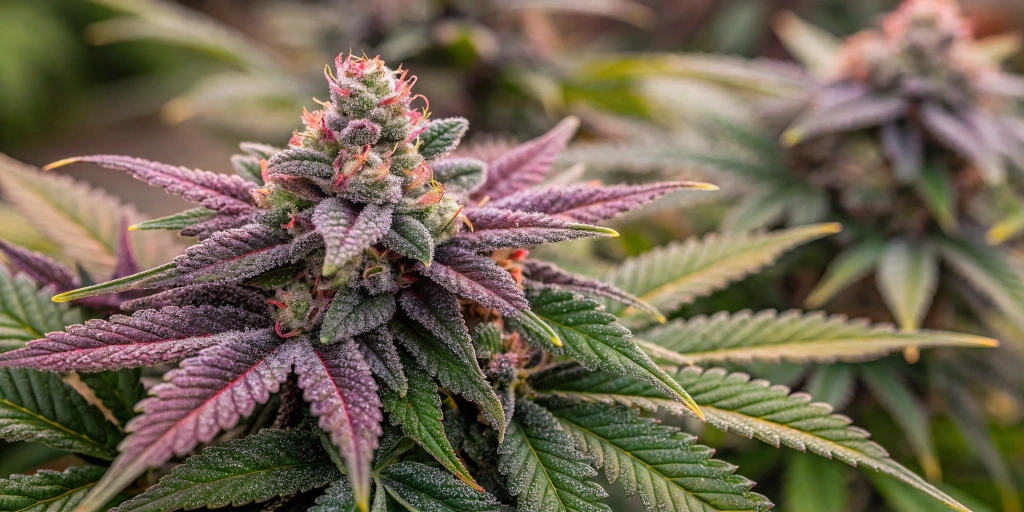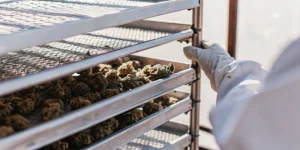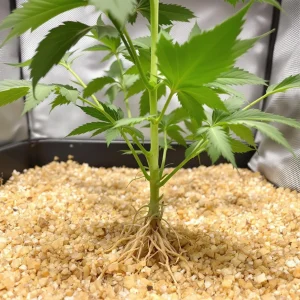Stardawg Auto strain: Exceptional Genetics and Effects
Origins and Genetics
Stardawg Auto strain originates from a carefully engineered genetic blend designed to deliver robust growth and high yields in compact spaces. Its lineage fuses potent indica traits with energetic sativa characteristics and an auto-flowering nature that removes the need for strict light cycle changes. This genetic stability ensures predictability and consistency across every cycle, making it ideal for growers with limited space.
The refined heritage of Stardawg Auto strain produces dense, resin-rich buds with a distinctive aroma. Growers appreciate its resilient performance and reliable nature, which results in high-quality harvests every time. Its genetics promise a balanced, potent high that meets the demands of both recreational and medicinal users.
Effects and Potency
Stardawg Auto strain offers a balanced high that uplifts the mind while gently relaxing the body. It delivers an energizing buzz paired with calming effects, ideal for creative activities and focused tasks. The strain’s effects are potent yet smooth, providing a reliable experience that satisfies without overwhelming, making it popular among diverse users.
Its aroma combines earthy undertones with hints of citrus and spice, resulting in a complex sensory profile. The flavor profile enhances its effects, ensuring each session is both stimulating and enjoyable. This combination of balanced potency and appealing taste has cemented Stardawg Auto strain as a top choice among enthusiasts.
Environmental Requirements for Growing Stardawg Auto strain
Setting Up the Growing Cannabis Space
Creating an optimal grow space is fundamental to successfully cultivating Stardawg Auto strain. Choose a well-ventilated area with controlled lighting, stable temperature, and consistent humidity to support natural growth. Whether using a dedicated room, a grow tent, or a small indoor setup, ensure the space is clean and equipped with essential tools like fans, carbon filters, and timers. This precise setup minimizes stress and fosters vigorous development.
A well-organized space maximizes light distribution and airflow, simplifying tasks such as watering and monitoring. With every element in place, managing your grow becomes more straightforward, resulting in a robust crop that consistently yields high-quality, aromatic buds.
Temperature and Humidity
Maintain temperatures between 70°F and 80°F during the vegetative stage, then slightly lower them during flowering to enhance resin production. Keep humidity at around 50–60% initially and reduce it to 40–50% during flowering to prevent mold and mildew. Stable conditions promote efficient nutrient uptake and overall healthy growth.
Indoor Cannabis Cultivation
Advantages of Growing Indoors
Indoor cultivation offers complete control over environmental variables, which is especially beneficial for growing Stardawg Auto strain. Shielding the plant from unpredictable weather and pests allows you to tailor light, temperature, and humidity precisely. This controlled environment ensures uniform, high-quality buds even in limited spaces, resulting in consistent yields and predictable performance year-round.
Indoor growing also enables continuous production regardless of outdoor conditions. With every variable optimized—from nutrient delivery to airflow—cultivators achieve robust growth and enhanced resin production, making Stardawg Auto strain a preferred option for controlled environments.
Lighting Needs
Full-spectrum LED or HPS lights provide the energy necessary for vigorous vegetative growth and dense bud development during flowering. Position the lights at an optimal distance from the canopy to avoid heat stress while ensuring even light distribution. A consistent schedule—typically 18 hours on and 6 hours off during vegetative growth, followed by a 12/12 cycle in flowering—maximizes photosynthesis and significantly boosts overall yield.
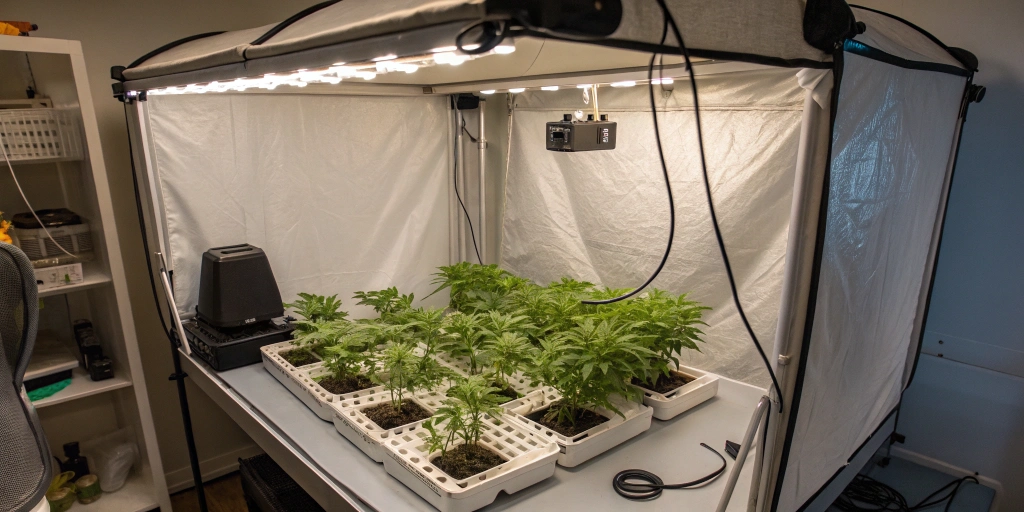
Outdoor Cannabis Cultivation
Best Conditions for Outdoor Growth
Stardawg Auto strain thrives outdoors in sunny, warm conditions with ample natural airflow. Choose a location that receives at least six hours of direct sunlight daily; natural light enhances terpene production and intensifies the strain’s distinctive flavor. The soil should be well-draining and enriched with organic matter to support vigorous growth and maximize yields.
A favorable outdoor environment also involves selecting a sheltered spot that protects the plant from heavy winds and intense rain while still receiving plenty of sunlight. Careful site selection and proper management can yield impressive results that rival indoor setups.
Growing Season
Plant Stardawg Auto strain seeds in early spring when temperatures are consistently warm and frost risk is minimal. This timing allows the plant to take full advantage of long, sunny days during summer, with the growing season extending into early fall before cooler weather sets in. A well-planned growing season maximizes light exposure and warmth, leading to robust growth and abundant, high-quality yields.
Advantages of Growing Stardawg Auto strain
Stardawg Auto strain offers a rapid growth cycle that allows for quick transitions from seed to harvest. This efficiency makes it ideal for growers with limited space or time, as multiple cycles can be achieved in a single year. Its robust genetics and predictable performance provide consistent, high-quality yields that satisfy both recreational and medicinal users, making it a top choice for those who value reliability and performance.
Its high yield potential in small spaces, coupled with balanced effects and a distinctive flavor profile, ensures that every grow produces aromatic, resinous buds that stand out for quality and potency.
Problems in Cultivating Stardawg Auto strain
Overwatering
Overwatering can damage the delicate root system of Stardawg Auto strain. Excess moisture leads to root rot and fungal infections that stunt growth and diminish yield. It is vital to allow the soil to dry slightly between waterings and use containers with proper drainage to maintain an optimal moisture balance.
Pest Infestations
Pests such as spider mites, aphids, and thrips can quickly undermine plant health if not managed promptly. Regular inspections and organic pest control measures help keep these threats at bay, ensuring that infestations do not compromise the quality or yield of the buds.
Similar Strains
White Widow Auto
White Widow Auto is a popular strain available at buycannabisseeds.net. This compact auto-flowering variety is known for its potent, well-balanced high and its resinous, dense buds. It offers a classic earthy and pine aroma with subtle hints of sweetness, making it a reliable alternative for those seeking a robust and consistent cultivation experience.
Amnesia Auto
Amnesia Auto is another excellent option found at buycannabisseeds.net. This strain delivers a clear, uplifting high paired with a smooth body relaxation. With its fast flowering time and high resin production, Amnesia Auto produces flavorful, aromatic buds that appeal to both recreational and medicinal users looking for quick yet satisfying results.
Blueberry Auto
Blueberry Auto is a standout strain offered at buycannabisseeds.net. Renowned for its distinctive berry aroma and balanced effects, this auto-flowering variety produces compact, resin-rich buds. It delivers a smooth high that blends mild cerebral stimulation with gentle relaxation, making it a great choice for growers seeking consistent performance in a small-space setup.
Week-by-Week Growth Plan for Stardawg Auto strain
Week 1 – Germination and Seedling Stage
Begin by soaking Stardawg Auto strain seeds in water for several hours, then place them between moist paper towels in a warm, dark environment until taproots emerge; carefully transfer the seeds into small pots with a well-draining medium, ensuring a consistent, warm, and humid environment to establish a robust root system.
Week 2 – Early Seedling Growth
In week two, the seedlings show their first true leaves and gradually increase in size as they adjust to the environment; provide gentle, indirect light and maintain moist, but not waterlogged, soil while keeping the temperature stable to support effective photosynthesis and build initial plant strength.
Week 3 – Continued Seedling Development
During week three, the seedlings continue growing, developing an expanded root system and additional leaves; increase light exposure gradually and maintain a balanced watering schedule to support steady growth, ensuring the plant builds a solid foundation for vigorous vegetative development.
Week 4 – Vegetative Growth Begins
At the start of week four, the plant enters the vegetative stage with noticeable increases in size and vigor; adjust light intensity and establish a structured watering schedule with a low dose of nitrogen-rich fertilizer to promote rapid growth, forming a robust framework for future bud production.
Week 5 – Accelerated Vegetative Growth
In week five, vegetative growth accelerates as the plant produces abundant foliage and stronger branches; continue regular feeding and maintain a steady watering schedule while using low-stress training techniques to shape the canopy, preparing the plant for a productive flowering phase.
Week 6 – Preparing for Flowering
During week six, early signs of flowering emerge as small bud formations appear and leaf coloration subtly changes; adjust the nutrient regimen by reducing nitrogen and increasing phosphorus and potassium to support bud initiation while monitoring environmental conditions closely to prevent stress.
Week 7 – Transition to Flowering
In week seven, the plant transitions to the flowering phase as indoor growers switch to a 12/12 light cycle; small buds begin to emerge, and nutrient schedules are adjusted to favor bloom-specific supplements, ensuring stable conditions and minimal stress during the energy shift.
Week 8 – Early Flowering
During week eight, the early flowering stage becomes pronounced as buds form and gain density; the plant channels energy into developing thicker bud clusters, while nutrient delivery is fine-tuned to support bud growth, with ongoing monitoring to maintain optimal conditions.
Week 9 – Mid-Flowering
In week nine, buds become more prominent as resin production increases and trichomes begin to develop, shifting from clear to milky; nutrient management is adjusted to support robust bud formation while avoiding nutrient burn, with frequent inspections ensuring ideal environmental conditions.
Week 10 – Bud Development
By week ten, the buds are well-formed and continue maturing in both density and size; the plant’s resin production intensifies and its aromatic profile becomes more pronounced, as careful nutrient management and stable conditions ensure every bud reaches its full potential.
Week 11 – Late Flowering
During week eleven, the plant enters late flowering, with trichomes shifting further to include hints of amber; buds become denser and more resinous, signaling that the optimal harvest window is near, while balanced nutrient delivery and stable conditions consolidate overall quality.
Week 12 – Harvesting Time
In week twelve, the plant is ready for harvest as trichomes display a mix of milky and amber hues and the buds are densely resinous; carefully cut the plant, trim excess foliage, and hang the branches in a dark, well-ventilated area to dry for 7–10 days, preserving flavor and potency.
Week 13-14 – Curing the Buds
During weeks thirteen and fourteen, focus on curing the harvested buds by transferring them into airtight glass jars and opening the jars daily during the first week to release excess moisture, gradually reducing the frequency; this careful curing process allows the buds to stabilize and develop a smoother, richer profile for a premium final product.
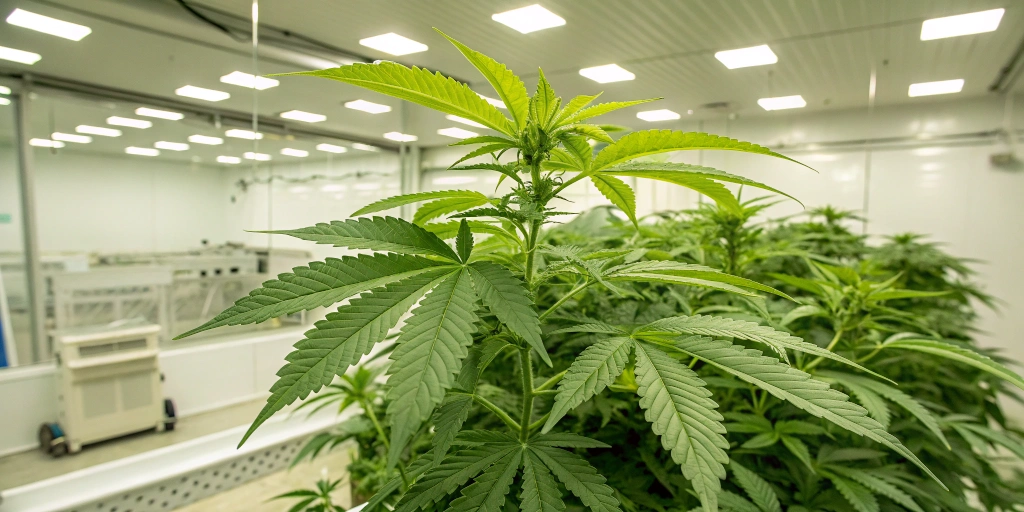
FAQs about Stardawg Auto strain
What is the typical THC content of stardawg auto strain?
Stardawg Auto strain typically exhibits THC levels ranging from 18% to 24%, offering a balanced potency that delivers uplifting creativity and relaxation. The consistent cannabinoid profile is achieved through refined genetics and cultivation practices, and reliably satisfies recreational and medicinal users while ensuring each harvest meets high quality standards, resulting in a smooth, enjoyable effect without overwhelming sedation.
How long does it take for stardawg auto strain to flower?
Stardawg Auto strain generally flowers within eight to ten weeks after transitioning to a 12/12 light cycle. This relatively short flowering period enables quick turnovers and efficient production for growers. The auto-flowering nature ensures a smooth, predictable transition from vegetative growth to bloom, resulting in consistent yields that make it especially attractive for those with limited space or time, offering a rapid and reliable harvest cycle.
What flavor profile can I expect from stardawg auto strain?
Stardawg Auto strain features a unique flavor profile that blends earthy undertones with hints of citrus and spice. The aromatic buds deliver a smooth, complex taste that evolves on the palate, offering both an invigorating zest and subtle herbal notes. This well-balanced flavor enhances its stimulating effects, creating an experience that is both refreshing and satisfying for users seeking a memorable cannabis high.

